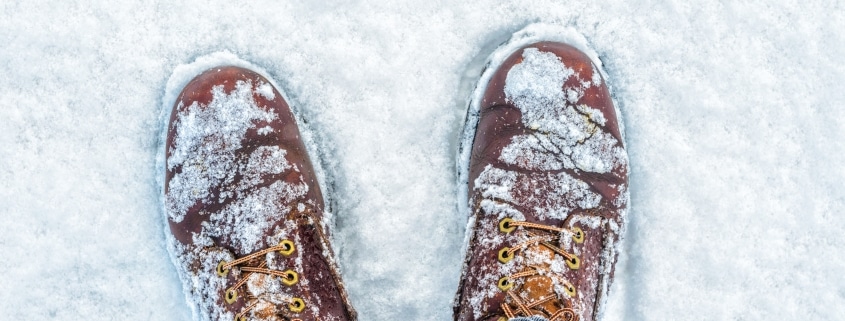Frostbite: What You Need to Know
Frostbite is the most severe kind of cold-related injury and the fingers, and toes are at the highest risk of becoming frostbitten. There are a variety of symptoms associated with frostbite. Recognizing and then treating frostbite as soon as possible is vital, but preventing frostbite in the first place is even better.
Recognizing, Treating and Preventing Frostbite
Knowing the symptoms associated with frostbite is the first step in properly treating this injury. Sometimes, people confuse chilblains with frostbite; however, the symptoms are different. Chilblains occurs when the skin is exposed to wet, cold and windy weather conditions. It causes swollen, dry, red and rough skin with tiny red bumps, which may ulcerate.
There are three degrees of frostbite:
- First degree (frostnip) — skin becomes red and irritated. Toes will feel cold to the touch. If not addressed soon, numbness sets in. Warming the toes may cause some tingling type of pain. Chilblains may be present once the toes are warm.
- Second degree — blisters and inflammation, but no tissue damage. Redness dissipates and the toes become pale (white or grayish-yellow in color). Although the skin may remain soft, ice crystals have probably formed within the tissue. All sensation in the affected toes may be lost. If the toes are warmed and treated, stinging and burning should be expected. Inflammation is likely and blisters may form over the next day or two.
- Third-degree — all skin layers are affected, resulting in permanent damage to the skin and its underlying tissues. The toes are completely numb; therefore, pain and discomfort are no longer an issue. However, the absence of these senses occurs because the nerves have sustained serious damage. Skin feels waxy, functioning of the muscles and joints is poor or non-existent. Tissue death is likely.
Treating Frostbite
Seek medical assistance if you think you have frostbite. If you have frostnip of the toes, remove any clothing that is wet and/or may prevent blood flow to your toes. To keep your blood vessels from constricting, do not smoke or drink any beverages that contain alcohol or caffeine. If there is no chance that they will re-freeze, you can use water that is not too hot to warm your toes. Warming them as soon as possible is essential to preventing damage. Remain in a warm area and avoid walking around. You can reduce inflammation by keeping your feet elevated. Once warmed, apply a sterile bandage or cotton to the affected toes, this helps prevent rubbing.
Preventing Frostbite of the Toes
When spending time in the frigid outdoors, warm-up sessions are important. Be sure to keep an eye on your toes because sometimes you will not even know that frostnip or frostbite is setting in.
Prevention tips:
- Wear two pairs of socks. Your inner sock should consist of synthetic fiber because these fibers wick water away from the skin. Your outer sock should be wool because it offers a great deal of insulation.
- The boots or shoes you wear need to be insulated and waterproof.
If you are experiencing any type of foot problem, contact Jeffery LaMour, DPM, PA, today at 512-451-3668. We can help.








Leave a Reply
Want to join the discussion?Feel free to contribute!